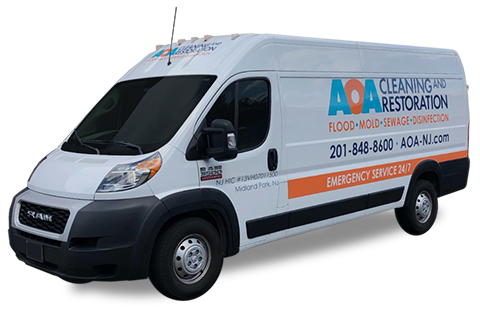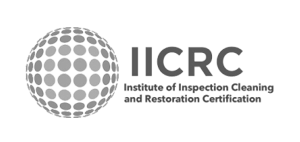If your home has recently experienced water damage, you may wonder if it is safe to sleep in it. Severe water damage can lead to numerous health hazards, structural integrity, and electrical safety issues, which can pose a threat to your overall well-being.
In this section, we will explore the safety concerns associated with sleeping in a water-damaged house. We will discuss the potential risks and provide precautions to ensure your safety before deciding to sleep in a water-damaged home.
Key Takeaways
- Water damage can pose potential risks to your health and safety.
- Structural integrity of the house can be damaged due to water damage.
- Before deciding to sleep in such a house, it is important to identify and address potential electrical hazards.
- Take necessary precautions and assess the situation before deciding to sleep in a water-damaged house.
- When in doubt, always seek professional assistance to ensure your safety.
Understanding the Risks of Water-Damaged Homes
Water damage in a home can trigger various risks that may compromise your safety while sleeping. Health hazards, structural damage, and electrical issues are some of the potential hazards that you should consider when sleeping in a water-damaged home.
Exposure to contaminated air quality due to mold growth is one of the health hazards associated with staying in a water-damaged house. Structural damage can weaken the foundation and result in wall cracks, making the home susceptible to collapse or other adverse effects. Moreover, water damage can cause electrical problems that may spark fires or electrocution hazards.
It is essential to assess the situation and take precautions to avoid the risks in a water-damaged house. Seek professional guidance and address the damage promptly to avoid exacerbating the risks.
Health Hazards in Water-Damaged Homes
When a house experiences water damage, it creates a suitable environment for the growth of mold and other harmful organisms. These microorganisms can spread quickly and contaminate the air quality in your home, leading to several respiratory issues such as coughing, wheezing, and asthma attacks. The severity of these health hazards depends on the extent of the water damage and how long it has been present in the house.
To better understand the potential risks, let’s take a closer look at some common health hazards:
| Health Hazards | Effects |
|---|---|
| Respiratory Issues | Mold can release spores that lead to coughing, wheezing, and asthma attacks. |
| Allergic Reactions | Exposure to mold can cause allergic reactions such as sneezing, runny nose, and skin irritation. |
| Neurological Problems | Prolonged exposure to mold can lead to memory loss, mood swings, and headaches. |
It is important to note that certain demographics, such as young children, the elderly, and pets, may be more susceptible to the effects of mold and other harmful organisms in the air. Therefore, it is crucial to take necessary precautions to ensure the air quality in your home is safe to breathe before deciding to sleep in a water-damaged house.
Structural Integrity and Safety Concerns
When dealing with water-damaged homes, structural integrity can be a significant safety concern for anyone considering staying in the house. Water damage weakens the foundation and walls, leading to potential collapse and other severe damage.
It is essential to assess any water-damaged house’s structural integrity before deciding to sleep there. Seek professional assistance to evaluate the extent of the damage and make any necessary repairs to ensure the house’s safety.
One crucial issue to consider is the possible growth of mold behind the walls. Mold caused by water damage can weaken the wood structure, making it structurally compromised and unable to support any weight.
You should also be aware of the signs of structural damage in a water-damaged home. These can include cracks in the walls, visible warping, or a visible sagging roof.
It is vital to address any damages promptly. Failure to do so may lead to severe structural damage, jeopardizing the safety of anyone sleeping in the property.
| Signs of Structural Damage in a Water-Damaged House |
|---|
| Cracks in the walls |
| Visible warping |
| Sagging roof |
In summary, stay aware of the risks entailed in staying in a water-damaged home, especially concerning the integrity of the structure, which is critical to ensuring your safety. Seek professional assistance to assess and repair any damage to avoid or address potential hazards properly.
Electrical Safety Precautions
When there is water damage in a house, it’s vital to be aware of the potential electrical hazards to keep yourself safe. Here are some electrical safety precautions to consider when sleeping in a water-damaged home:
- Stay away from electrical devices and outlets that have been submerged in water – This is crucial in preventing electrocution. Do not use any electrical devices or touch any outlets until they have been inspected by a professional electrician.
- Turn off the electrical source – Before starting cleanup, turn off the electricity from the main electrical source. This step will prevent electric shock and other electrical hazards.
- Beware of frayed or cut wires – Wires that have been exposed to water may break or become damaged. If you notice any frayed or cut wires, do not attempt to fix them yourself. Call a licensed electrician to help you instead.
- Use GFCI-protected outlets – Ground Fault Circuit Interrupter (GFCI) outlets can detect and prevent electrical problems, such as overloading and short-circuiting.
Following these electrical safety precautions can help prevent electrical hazards and keep you and your loved ones safe when sleeping in a water-damaged house. Remember, if you’re unsure about the safety of any electrical device or outlet after water damage, it’s always best to seek advice from a qualified electrician before using it.
Taking Precautions and Assessing the Situation
Before sleeping in a water-damaged house, it is crucial to take necessary precautions and assess the situation to ensure your safety.
Here are some guidelines to help you evaluate the extent of the damage and take the necessary steps:
| Assessment Steps | Description |
|---|---|
| Inspect the Damage | Thoroughly assess the extent of water damage in the house, including any standing water, dampness or mold growth. Identify any visible cracks, rotting wood, or compromised structures. |
| Consult a Professional | Speak to an expert, such as a water damage restoration company, to evaluate the extent of the damage and provide recommendations on necessary repairs. Don’t attempt to fix the damage yourself as it may lead to further damage or injury. |
| Take Safety Precautions | Wear protective gear, like gloves and face masks, when handling damaged materials or exposed to mold. Keep children and pets away from the affected area. |
| Ensure Proper Ventilation | Open windows and use fans or dehumidifiers to increase airflows, helping to dry out the area and reduce moisture that leads to mold growth. |
| Consider Alternative Accommodations | If the damage is severe, staying in the house may not be safe. Consider alternative accommodations, like staying with friends or family, until the necessary repairs are done. |
By following these precautions and guidelines, you can assess the safety of sleeping in a water-damaged house and take the necessary steps to ensure your well-being.
Conclusion
When it comes to sleeping in a house with water damage, it is essential to prioritize your health and safety. As we have explored in this article, there are several risks associated with staying in such an environment, including health hazards, structural damage, and electrical issues.
Before deciding to sleep in a water-damaged house, it is crucial to take precautions and assess the situation thoroughly. Make sure to identify potential hazards and address them accordingly. Seek professional guidance if necessary to ensure your safety is not compromised.
Remember, your well-being should always be the top priority. By taking the necessary precautions and assessing the situation, you can ensure that your sleep environment is safe and conducive to your health.
FAQ
Is it safe to sleep in a water-damaged house?
Sleeping in a water-damaged house can be risky due to potential health hazards, structural integrity concerns, and electrical safety issues. It is important to take precautions and assess the situation before deciding to sleep in such a home.
What are the risks of staying in water-damaged homes?
Water-damaged homes can pose various risks, including health hazards, compromised structural integrity, and potential electrical safety concerns. It is crucial to understand these risks before making a decision.
What are the health hazards associated with water-damaged homes?
Staying in a water-damaged house can expose you to health hazards such as mold growth and contaminated air quality. These can lead to respiratory issues and other related health problems. It is important to prioritize your health and safety.
Should I be concerned about the structural integrity of a water-damaged house?
Absolutely. Water damage can weaken the foundations and structural components of a house, potentially leading to collapse or other safety hazards. It is crucial to assess the extent of the damage and consider professional assistance to ensure your safety.
What electrical safety precautions should I take in a water-damaged house?
It is important to identify and address potential electrical hazards in a water-damaged house. This may include turning off power sources, avoiding wet areas, and seeking professional assistance to inspect and repair any damaged electrical systems.
What precautions should I take before sleeping in a water-damaged house?
Before deciding to sleep in a water-damaged house, it is essential to thoroughly assess the extent of the damage, seek professional guidance, and implement necessary precautions. This may involve ensuring proper ventilation, using protective gear, and addressing any potential safety concerns.




















